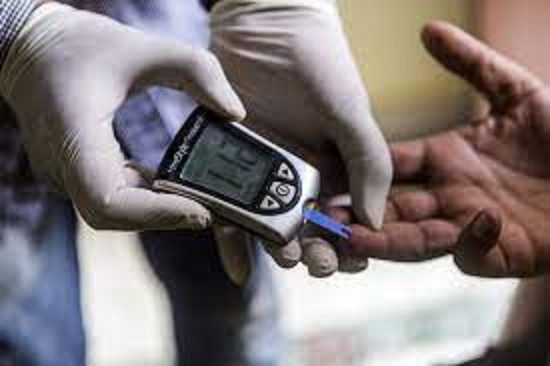Globally, 1.3 billion projected to be living with diabetes by 2050

New Delhi: Population living with diabetes worldwide, currently half a billion, is projected to more than double to 1.3 billion in the next 30 years with every country expected to see an increase, according to a new analysis published in The Lancet.
“The rapid rate at which diabetes is growing is not only alarming but also challenging for every health system in the world, especially given how the disease also increases the risk for ischemic heart disease and stroke,” said Liane Ong, lead author and Lead Research Scientist at the Institute for Health Metrics and Evaluation (IHME) at the University of Washington’s School of Medicine, US.
Almost all global cases, 96 per cent, are type 2 diabetes (T2D), the researchers said, who used the Global Burden of Disease (GBD) 2021 study and examined the prevalence, morbidity, and mortality of diabetes for 204 countries and territories by age and sex between 1990 and 2021 and forecasted diabetes prevalence to 2050.
“Despite increased awareness and ongoing multinational efforts, diabetes is pervasive, exponentially growing in prevalence, and outpacing most diseases globally… Worse still, structural racism experienced by minority ethnic groups and geographic inequity experienced by low- and middle-income countries (LMICs) are accelerating soaring rates of diabetes disease, illness, and death around the world,” the paper said.
According to another Lancet paper released last week, India has a much higher burden of non-communicable diseases than many other countries, with 101 million people in the country having diabetes, and 136 million people being prediabetic.
Estimates indicate that more than three-quarters of adults with diabetes will live in LMICs by 2045, of whom fewer than 1 in 10 will receive guideline-based comprehensive diabetes care.
According to the researchers, the Covid-19 pandemic has amplified diabetes inequity globally, with people with diabetes, especially those from ethnic minority groups, 50% more likely to develop severe infection and twice as likely to die compared to those without diabetes .
“Diabetes remains one of the biggest public health threats of our time and is set to grow aggressively over the coming three decades in every country, age group, and sex, posing a serious challenge to health-care systems worldwide,” said one of the paper’s authors, Dr Shivani Agarwal, Fleischer Institute for Diabetes and Metabolism, Albert Einstein College of Medicine and Montefiore Health System, US, in a statement.
“A central focus and understanding of inequity in diabetes is vital to achieve the UN’s Sustainable Development Goal to reduce non-communicable diseases by 30% in less than seven years and to curtail the increasingly negative effects on the health of marginalised populations and the strength of national economies for decades to come. This Series offers an important opportunity for concerted, pragmatic action to transform approaches to diabetes care and outcomes for marginalised populations around the world,” she added.
Co-author Leonard Egede, Medical College of Wisconsin, USA, said, “This cascade of widening diabetes inequity leads to substantial gaps in care and clinical outcomes for people from historically disenfranchised racial and ethnic groups, including Black, Hispanic, and Indigenous people.”
The authors highlight international examples of how to address diabetes inequity in the real world by changing the ecosystem (societal and policy-level factors), building capacity, and improving the clinical practice environment.
Insulin access, they said, is an important part of the ecosystem for millions of people with diabetes who cannot obtain or afford the necessary supplies to self-manage their diabetes.
Co-author Leonard Egede, Medical College of Wisconsin, USA, said, “This cascade of widening diabetes inequity leads to substantial gaps in care and clinical outcomes for people from historically disenfranchised racial and ethnic groups, including Black, Hispanic, and Indigenous people.”
The authors highlight international examples of how to address diabetes inequity in the real world by changing the ecosystem (societal and policy-level factors), building capacity, and improving the clinical practice environment.
Insulin access, they said, is an important part of the ecosystem for millions of people with diabetes who cannot obtain or afford the necessary supplies to self-manage their diabetes.




